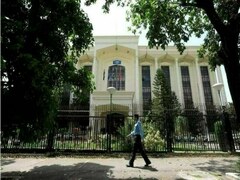The power sector has an annual turnover of around Rs 3.3 trillion. Of this, collection stands at around 88 percent, while 12 percent of billing goes unrecovered. Coupled with line losses of around 21 percent—5 percentage points in excess of the 16 percent allowed by Nepra (National Electric Power Regulatory Authority)—we are looking at an annual power sector deficit of at least Rs 500 billion being added to over Rs 2.6 trillion in circular debt each year.
For starters, the government must arrest circular debt growth. This can be achieved in as little as 6 months with efforts on three main fronts.
First is increasing recovery against receivables. This requires restructuring the Discos’ collection mechanism that is compromised by political and other interest groups at local levels. A specialized agency with a clear time-bound mandate to ensure maximum recovery of new electricity bills as well as previous defaults must be established. It should comprise of independent experts from the power sector and be provided with explicit target-based incentives.
Second is through recovery against updated consumer security deposits. Currently, security deposits held by the power sector—including all DISCOs—amount to Rs 57 billion, which is only around 17 percent of their total monthly billing. For comparison, security deposits worth three months of billing are held by SNGPL and SSGC in the gas sector.
This number must be immediately brought up to deposits worth one month of billing, which can be collected through electricity bills in 3 to 6 monthly installments. Protected domestic consumers with monthly consumption of up to 300 units must be exempted from the updated security deposit.
This measure will still provide the power sector with around Rs 250 billion in liquidity. Deposits can be further increased to 1.5 to 2 months of billing for certain high-risk consumers, and mandatorily for defaulters, to collect an additional Rs 200 to Rs 250 billion.
Third is the introduction of prepaid metering. Given the prevalence of nonpayment of electricity bills, all electric supply—including to government departments—must be channeled through prepaid meters to ensure full bill recovery.
Contrary to common perceptions, prepaid meters are cheap to purchase and install, and can communicate with power distributors through the grid without any additional internet-based connectivity.
In addition to eliminating the need for billing and bill-recovery efforts on the supply side, they also provide the consumer with real-time information on their energy usage, allowing for more effective budgeting and more efficient consumption, and eliminate the potential for overcharging due to erroneous billing.
These measures can provide the power sector with an injection of Rs 300 to Rs 500 billion over the next 180 days without increasing the tariff burden on consumers and create the space necessary to provide economic relief to household, retail, and industrial consumers alike.
Once the power sector deficit has been addressed, the next step would be to embed these measures into a long-term strategy and do away with the circular debt in its entirety.
Copyright Business Recorder, 2023
PUBLIC SECTOR EXPERIENCE: He has served as Member Energy of the Planning Commission of Pakistan & has also been an advisor at: Ministry of Finance Ministry of Petroleum Ministry of Water & Power
PRIVATE SECTOR EXPERIENCE: He has held senior management positions with various energy sector entities and has worked with the World Bank, USAID and DFID since 1988. Mr. Shahid Sattar joined All Pakistan Textile Mills Association in 2017 and holds the office of Executive Director and Secretary General of APTMA.
He has many international publications and has been regularly writing articles in Pakistani newspapers on the industry and economic issues which can be viewed in Articles & Blogs Section of this website.
The writer is B.E. (Elect), Dip. Pub. Admn, Dip. Bus. Admn., Cert. Statistical Sciences, M.B.A. and former MD PEPCO, former President I.E.E.E.P. Former Caretaker President I.E.E.E.P
























Comments
Comments are closed.